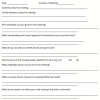Implementing a Practical Global Health Curriculum: The Benefits and Challenges of Patient-Based Learning in the Community
- PMID: 32766194
- PMCID: PMC7379171
- DOI: 10.3389/fpubh.2020.00283
Implementing a Practical Global Health Curriculum: The Benefits and Challenges of Patient-Based Learning in the Community
Abstract
Background: A growing number of medical schools across the world have incorporated global health (GH) into their curricula. While several schools focus GH education on lecture-based courses, our premise is that global health education should embody a holistic approach to patient care and medical education in local communities. Medical students may learn global health by focusing on real patients, their families and communities as part of a practical curriculum. Aims and Objectives: A unique GH curriculum was devised to compare student learning outcomes on a practical vs. lecture-based course. The premise was that learning from patients would result in a greater breadth of coverage of the global health syllabus as compared to that from a lecture-based course. Methods: A teaching and learning program was developed over 3 years to provide medical students interaction with real patients in the community on a first-preclinical-year Introduction to Global Health and Medical Anthropology course. Learning outcomes on the practical vs. lecture-based course were compared using thematic analysis of the written assignments of both courses: global health case reports and literature reviews, respectively. All members of three cohorts of students undertaking the course in successive academic years were compared (Group A: literature review; Groups B and C: case reports; n = 87). Results: Case reports provided evidence of a greater breadth of learning outcomes when compared to the literature review (p < 0.001). The writing of the case report was enhanced by completion of a field journal and family health needs assessment tool (p < 0.001). Students demonstrated a closeness to their patients that added depth, understanding and motivation to assist patients in health activities and advocate for their needs. Discussion: Placements with patients in the community provided students with a rich learning environment and facilitated the formation of relationships with patients to better understand the social determinants of health and advocate for improvements in their living and working conditions and access to healthcare. Conclusions: Global health may be better learned experientially by following patients rather than from frontal lectures. Patient-based learning inspires a commitment to the individual and facilitates medical schools in meeting their obligations to the communities they serve.
Keywords: global health; global health competencies; medical education in the community; patient-centered curriculum; social determinants of health.
Copyright © 2020 Biswas, Douthit, Mazuz, Morrison, Patchell, Ochion, Eidelman, Golan, Alkan, Dwolatzky, Norcini, Waksman, Solomonov and Clarfield.
Figures






References
-
- Foucalt M. The Birth of the Clinic: An Archaeology of Medical Perception. Transl. by A. M. Shridan Smith. New York, NY: Parthenon; (1994).
Publication types
MeSH terms
LinkOut - more resources
Full Text Sources

